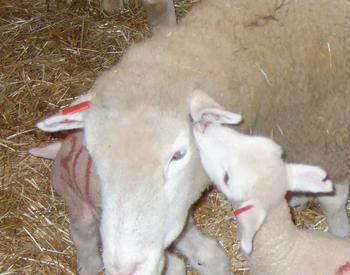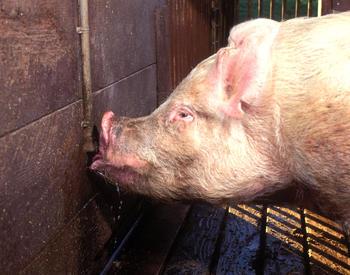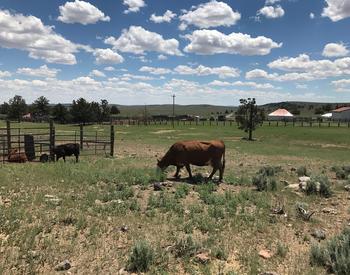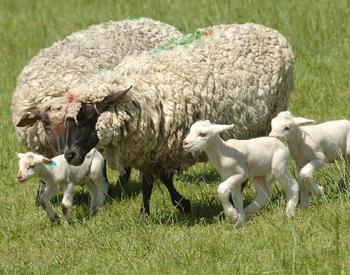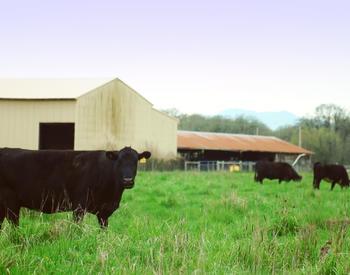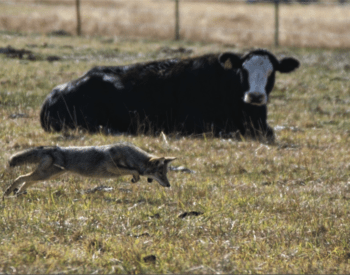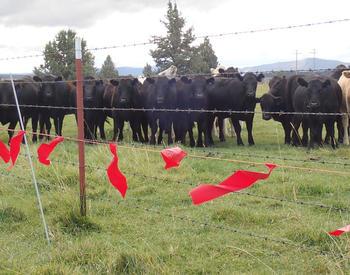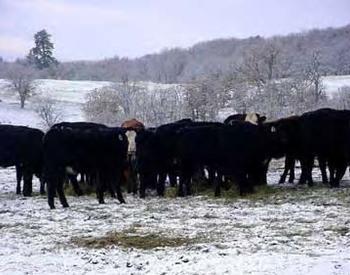There is no room for snap judgments when selecting breeding sheep. Next year’s lamb crop depends on our choices now. Take the time and the gas to drive around and look at prospects.
Always keep your improvement plan in mind; choose only rams and ewes that will move you toward your goal. The ram contributes 80 to 90 percent of the genetic improvement to the flock. A good ram does not cost — it pays. An outstanding sire can’t be purchased for market price, and you can’t expect outstanding lambs from a scrub ram. Keep the following in mind as you look at prospects:
- Each new ram and ewe should have been born and raised as a twin from a highly productive ewe that has consistently produced and raised twins or triplets.
- Select rams and ewes for growth and rapid gain. They should have at least a 60-day adjusted weight of 55 pounds.
- Ask for production records on the flock and performance information on individuals. Obtain as much information as you can on performance of the sire, the dam and the flock of which they are a part — more than just placings and winnings at shows.
- Check ewes and rams for soundness in feet, legs and mouth.
- Select sexually aggressive rams.
- Scrotal circumference is probably the best indicator of fertility. Average scrotal circumference at five to seven months is 30 to 32 centimeters. Testicles should be well formed and well developed.
- If ewes have had lambs, check the udders for soundness. They should be soft and pliable and free of lumps.
- Because wool contributes to the income from a sheep enterprise, don’t overlook it when making your choices. Select heavy shearing sheep that have a dense, uniform fleece free of dark fibers.
Managing rams
Purchase new rams well before the anticipated start of the breeding season. The following guidelines may help you improve your ram management:
- Do not turn a newly purchased ram in with ewes immediately upon arrival on the farm. Wait at least two to three weeks until he becomes accustomed to his new environment.
- Shear rams six to eight weeks before the start of the breeding season.
- Measure scrotal circumference two months before the start of the breeding season and at the start of the breeding season. If the second measurement is 5 or more centimeters smaller than the first, the ram may be infertile.
- Keep the ram’s feet trimmed. Check and trim feet at least 30 days prior to the start of the breeding season. A lame ram will not get the job done.
- Keep rams as cool as possible by providing shade or cool quarters.
- Maintain the rams in good condition, but do not allow them to become excessively fat. Poor nutrition can result in lower fertility and loss of vigor and aggressiveness.
- During breeding season, feed rams about 1 pound of grain per day. If rams are thin going into breeding, increase the grain to 1.5 pounds.
- Keep rams separate from ewes except during the breeding season.
- Use one yearling ram or mature ram per 35 ewes. A well-grown ram lamb should not be used on more than 25 ewes.
- If the weather is hot during the breeding season, turn the rams in with the ewes at night and keep them in cool quarters during the day. This allows you to provide supplemental feed if necessary.
You can raise ram efficiency by using a rotation system or by hand breeding. For a rotational system, rotate the rams every 24 hours. Place one ram or group of rams with the ewes for one day (or night). Replace rams with another ram or group while you rest and feed the first ones. Two aggressive rams can be used on 100 ewes.
For hand breeding, place the ewe in heat with the ram for breeding one time and then remove her. Repeat twice in 24 hours while the ewe is still in heat. A vigorous, well cared-for ram may breed about five ewes per day on this system.
Consider using a marking system to check ram performance and to determine when ewes are bred so that you can predict lambing dates. A marking system can consist of a harness containing a crayon. Another method is to mix a coloring material with oil or grease and apply a small amount each day to the brisket of the ram. Change the color every 17 days, using the lightest colors first.
If you do not use a marking system, record the date rams were turned in with the ewes so that you will know when to expect the first lambs. Determine how long a breeding season you want and remove the rams at the end of this time. A 34-day breeding season allows all ewes to return to heat if they don’t conceive. Some have the opportunity to cycle three times. A longer breeding season tends to string out the lambing season, thus making management of lambs more difficult.

